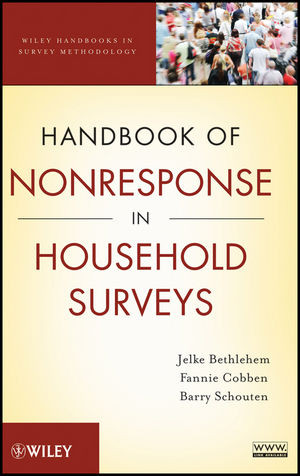

Most ebook files are in PDF format, so you can easily read them using various software such as Foxit Reader or directly on the Google Chrome browser.
Some ebook files are released by publishers in other formats such as .awz, .mobi, .epub, .fb2, etc. You may need to install specific software to read these formats on mobile/PC, such as Calibre.
Please read the tutorial at this link: https://ebookbell.com/faq
We offer FREE conversion to the popular formats you request; however, this may take some time. Therefore, right after payment, please email us, and we will try to provide the service as quickly as possible.
For some exceptional file formats or broken links (if any), please refrain from opening any disputes. Instead, email us first, and we will try to assist within a maximum of 6 hours.
EbookBell Team

5.0
20 reviewsNonresponse and its impact on the sample selection mechanism of a survey is a common problem that often arises while collecting survey data. Handbook of Nonresponse in Household Surveys is a complete guide to handling the nonresponse problem, outlining statistical methods and techniques for improving response rates and correcting response data.
The authors begin with an introduction to the nonresponse problem along with basic concepts and definitions. Subsequent chapters present current theories and methods that enable survey researchers to skillfully account for nonresponse in their research. Exploring the latest developments in the field, the book also features:
An introduction to the R-indicator as an indicator of survey quality
Discussion of the different causes of nonresponse
Extensive treatment of the selection and use of auxiliary information
Best practices for re-approaching nonrespondents
An overview of advanced nonresponse correction techniques
Coverage of adaptive survey design
Throughout the book, the treatment of each topic is presented in a uniform fashion. Following an introduction, each chapter presents the key theories and formulas underlying the topic and then illustrates common applications. Discussion concludes with a summary of the main concepts as well as a glossary of key terms and a set of exercises that allows readers to test their comprehension of the presented material. Examples using real survey data are provided, and a related website features additional data sets, which can be easily analyzed using Stata or SPSS software.
Handbook of Nonresponse in Household Surveys is an essential reference for survey researchers working in the fields of business, economics, government, and the social sciences who gather, analyze, and draw results from data. It is also a suitable supplement for courses on survey methods at the upper-undergraduate and graduate levels.
Content: